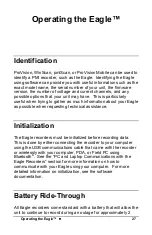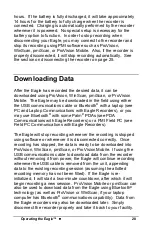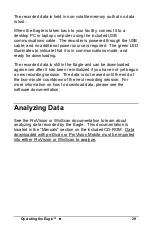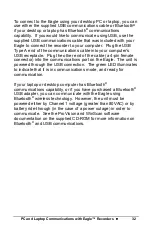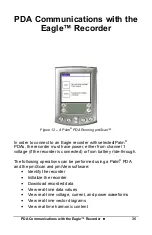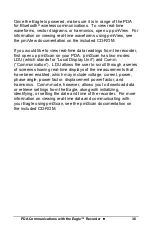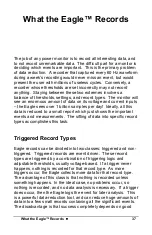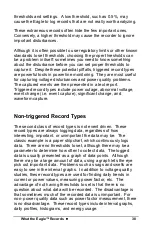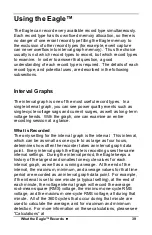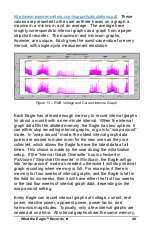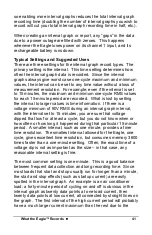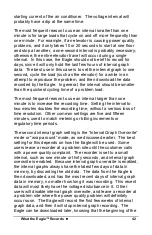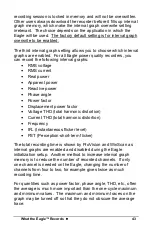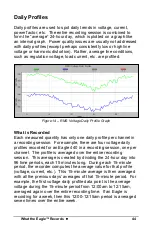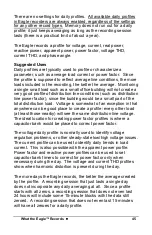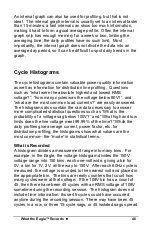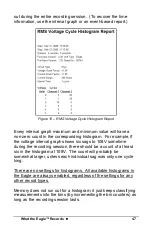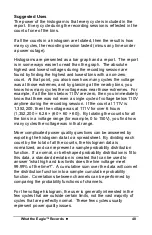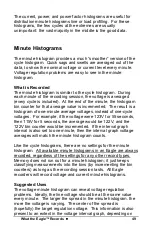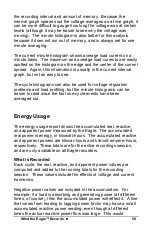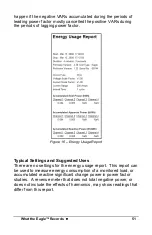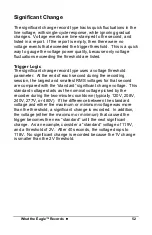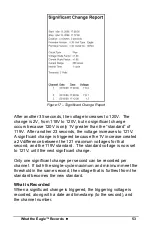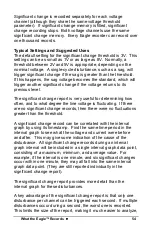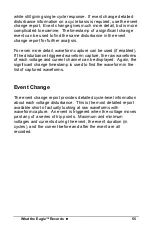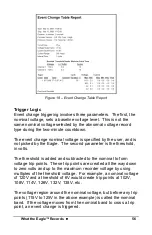
What the Eagle™ Records
••••
41
so enabling more interval graphs reduces the total interval graph
recording time (doubling the number of interval graphs you wish to
record will cut your total interval graph recording time in half, etc.).
When creating an interval graph or report, any “gaps” in the data
due to a power outage are filled with zeroes. This happens
whenever the Eagle loses power on its channel 1 input, and its
rechargeable battery runs down.
Typical Settings and Suggested Uses
There are three settings for the interval graph record types. The
primary setting is the interval. This time setting determines how
often the interval graph data is recorded. Since the interval
graphs always give worst case one-cycle maximum and minimum
values, the interval can be set to any time value without a loss of
measurement resolution. For example, even if the interval is set
to 15 minutes, the maximum and minimum one-cycle RMS values
for each 15-minute period are recorded. What is lost by setting
the interval to larger values is time information. If there is a
voltage minimum of 90V RMS during an interval graph interval,
with the interval set to 15 minutes, you are sure that voltage
dipped that low for at least a cycle, but you do not know when or
how often or how long it happened during that particular 15 minute
period. A smaller interval, such as one minute, provides a finer
time resolution. The smallest interval allowed for the Eagle, one
cycle, gives excellent time resolution, but consumes memory 3600
times faster than a one-minute setting. Often, the exact time of a
voltage dip is not as important as the size – in that case, any
reasonable interval setting is fine.
The most common setting is one minute. This is a good balance
between frequent data collection and long recording time. Since
most loads that start and stop usually run for longer than a minute,
the start and stop effects (such as startup current) are easily
spotted in the interval graph. An example is an air conditioner
load: a forty-minute period of cycling on and off is obvious in the
interval graph as twenty data points at one load current, then
twenty data points at low current, all connected by straight lines on
the graph. The first interval of the high current period will probably
have a much larger current maximum than the rest due to the
Содержание Eagle 220
Страница 2: ......
Страница 3: ...Eagle Power Quality Recorder User s Manual...
Страница 8: ......
Страница 12: ......
Страница 14: ......
Страница 32: ...Connecting the Eagle 24 Figure 8 Eagle Hookup Diagrams...
Страница 38: ......
Страница 42: ......
Страница 90: ......
Страница 95: ......
Страница 96: ......

